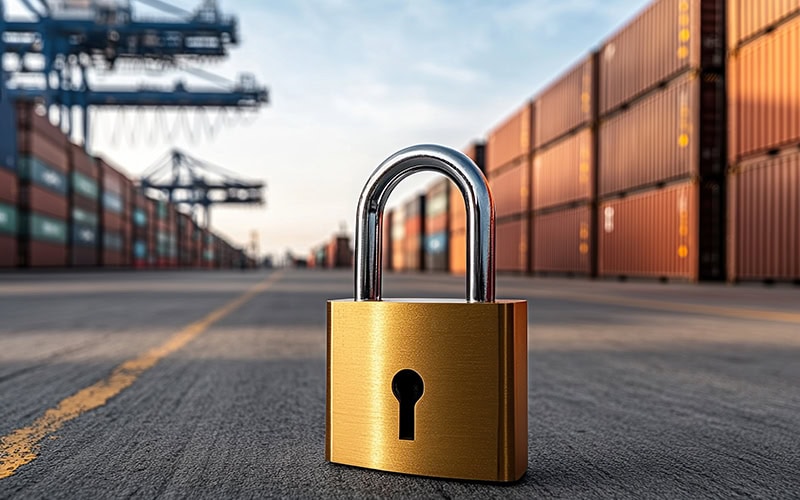How to Combat Cargo Theft With ID Verification

Logistics and supply chain operations are grappling with an alarming surge in cargo theft; recent data highlights the severity of the issue.
The consequences of these thefts go beyond financial losses; they strain supply chains, disrupt inventories, and impact business reputation and operational consistency. In a bid to offset these losses, companies often increase product prices, transferring the cost burden to consumers.
Stolen goods also frequently reappear on black markets, further inflating the prices of legitimate products and impacting consumer trust.
Who is in the driver’s seat?
Compounding the problem is the widespread use of fraudulent identification within the freight industry. Alarmingly, 1 in 20 (4.7%) driver IDs in logistics are fake, while an additional 1.2% are expired or otherwise invalid.
These fraudulent IDs raise a pressing question about a critical vulnerability. Who is in the driver’s seat? And what impact is caused by enabling unauthorized individuals to access sensitive supply chain operations?
This underlying identity crisis highlights a pressing need to implement stringent verification measures to ensure that operators at each point in the supply chain are who they say they are. Without reliable systems to authenticate the identities of drivers and personnel, supply chains remain vulnerable to infiltration and theft.
Identity verification lies at the heart of the solution. Advanced ID verification systems enable businesses to authenticate drivers and logistics personnel, ensuring that only authorized individuals are granted access to supply chain operations.
The financial impact of cargo theft cannot be understated, and prevention is far more effective than recovery. When robust identity checks are in place, the risk of detection increases, acting as a deterrent for potential offenders. It also makes it significantly harder for criminals to exploit vulnerabilities in the system, reducing the likelihood of theft and fraudulent activity.
Modern technology plays a pivotal role in enhancing ID verification capabilities. Artificial intelligence (AI) algorithms can analyze vast datasets to detect fake IDs, flag suspicious patterns, and identify inconsistencies in real time. These systems make it more difficult for fraudsters to exploit existing loopholes in supply chain processes.
Ensuring Real-Time Validation
Integrating ID verification systems with authoritative databases, such as those maintained by the Department of Motor Vehicles, further bolsters security. This ensures real-time validation of driver credentials, eliminating the risk posed by expired or fraudulent IDs and providing a reliable safeguard against unauthorized access. For those continuing to commit theft, knowing their identity allows effective recovery to take place.
Implementing advanced ID verification also safeguards businesses, consumers, and the economy from the ripple effects of theft and fraud. With cargo theft becoming increasingly organized, prevention through robust identity verification is crucial to staying ahead of evolving threats.
Combating the rise in cargo theft is a complex challenge, particularly as AI and deepfake technology become more efficient and sophisticated. By focusing on ID verification, the logistics sector can take back control of cargo theft, safeguard goods, and protect consumers from the cascading effects of this growing crisis.

